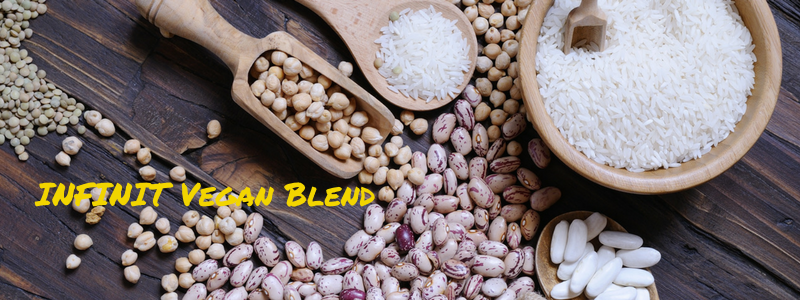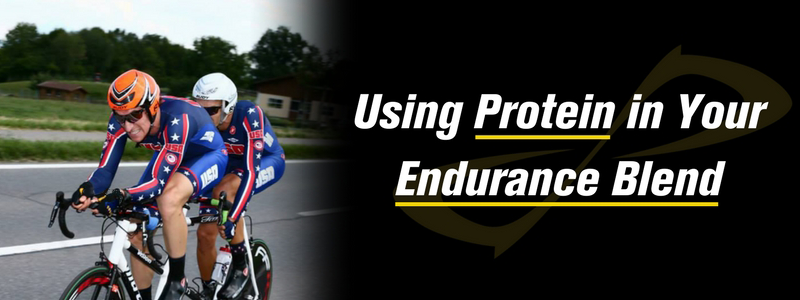What Is Creatine? | Creatine Supplementation
- 23 Jan 2017

Creatine at a Glance:
- INFINIT offers 400mg non-GMO, vegan friendly Creatine Monohydrate per serving as an optional “Extra” for Custom Formulas.
- Creatine supplementation specifically produces significant benefits in performance during short-duration, high-intensity exercise.
So What Exactly is Creatine?
Creatine is a naturally occurring organic acid that essentially acts as a “fuel source” for ATP (the energy currency of the body). Creatine is naturally synthesized in the liver, and transported in the blood to the muscles. Creatine can also be taken in through a healthy diet, and is found in food sources like meat and fish.
In the muscle, creatine works as a part of phosphocreatine (PCr), a high-energy phosphate donor, which acts to restore ATP for short bursts of energy. This particular energy system is mainly used during anaerobic efforts lasting around 8-10 seconds.
While creatine supplementation can be a tool to help an athlete do more work, it does not play a direct role in increasing strength or size of muscle fibers. It does, however, allow for intermittent sprint or lifting work to be done for a longer period of time, thus increasing training load capacity.
One way you can look at it, is to think of creatine like a gas tank: If the tank is topped off, it will allow the car to go further. If your phosphocreatine system is “topped off” with extra creatine, it will allow your body to go further and do those last few reps.

Creatine Supplementation Practices
So how does creatine supplemention work and how does it influence the availability of creatine and phosphocreatine (PCr) within the muscle? Supplementing has been shown to increase creatine stores in the muscle from 0-40% higher than pre-supplementation storage in muscle tissue (it should be noted that the highest increases are observed in vegetarians and vegans who are new to creatine supplementation).
Most experts recommend two main “phases” of Creatine supplementation: The loading phase and the maintenance phase.
The loading phase generally last about 5-7 days, and calls for the athlete to take in a significant amount of creatine, spread out over 4-5 times per day. Research shows an effective loading phase dosage ranges from 15-30 grams per day. Additional studies also show that lower doses (3 grams per day) over a longer period of time (30 days) produces similar results.
During the loading phase, the body stores muscle creatine to capacity and the remaining creatine is excreted in the urine. These findings suggest that the “loading” phase of creatine supplementation can actually be reduced in duration with the same effect. In fact, some studies speculate that eliminating a “loading” phase all together will produce similar results without the excess urinary excretion.
The maintenance phase follows the loading phase, and involves taking a much lower daily dose of 1.5-3.5 grams spread out over per day for about 3 weeks (although some studies extend the maintenance phase up to 11 weeks in duration).
We now make it easy to hit your maintenance dose levels simply by drinking your INFINIT Custom Mix! Just select the Creatine Monohydrate option when you’re selecting your bag size, and your Custom Fuel Blend will contain a level that aligns with the recommended maintenance dosage (400mg of Creatine Monohydrate per serving).
Not all Creatines are Created Equal
We chose Creatine Monohydrate over the various other forms of creatine because we firmly believe it is the best form of creatine available today. Creatine Monohydrate is the most widely used form of creatine in the United States, and is also the form or creatine that is most commonly studied in scientific research. In addition, it is the most pure form of creatine found in nature and provides the body with 88% pure creatine per molecule.
Potential Side Effects of Creatine Supplementation
A noticeable side effect of creatine supplementation is a substantial reduction in urine production in the first 3 days of creatine loading. This effect is thought to be attributed to the osmotic load of creatine, which causes water retention, and ultimately accounts for the weight gain that is standard with early creatine supplementation.
Other side effects are mostly anecdotal such as increased muscle cramping (particularly in the heat), dehydration, nausea, and other gastrointestinal (GI) disturbances when taken during exercise.
There is also a misconception that creatine can cause kidney and liver damage due to the temporarily elevated levels of creatinine (a marker used to diagnose kidney problems), which results following creatine supplementation. However, numerous studies have concluded long-term creatine use does not appear to have any negative side effects on the liver or kidneys, and research continues to accumulate to support creatine’s safety and efficacy in athletes.
Double Down on Performance with Beta-Alanine

One particular note of interest comes from the effects of supplementing both creatine and beta alanine on athletic performance. For example, the dual supplementation was tested during a 10 week resistance training program for football players. The study found significant changes in lean body mass and body fat percentage in the combined supplementation group, compared to the creatine only group or placebo group. Along with the difference in body composition, significant improvements in VO2 max and power output at lactate threshold (LT) were also seen in the combined supplementation group.
So, simply put, creatine is a well-researched ergogenic aid, which has been proven to be effective in enhancing athletic performance by helping to combat fatigue during your workouts. Extending the time it takes for your muscles to fatigue allows you to work out longer and with more intensity, ultimately improving your strength and muscle size, which can have profound effects on your training.
Sources
A., D., & A. (2015, December). Nutrition and Athletic Performance. Medicine & Science in Sports & Exercise, 543-568.
- Buford, T. W., Kreider, R. B., Stout, J. R., Greenwood, M., Campbell, B., Spano, M., . . . Antonio, J. (2007, August 30). International Society of Sports Nutrition position stand: Creatine supplementation and exercise. J Int Soc Sports Nutr Journal of the International Society of Sports Nutrition, 4(1), 6. doi:10.1186/1550-2783-4-6
- Dunford, M., & Doyle, J. A. (2008). Nutrition for Sport and Exercise (Second ed.). Belmont, CA: Thomson Wadsworth.
- Jenkins, J. A., MD. (n.d.). Creatine Supplementation in Athletes: Review. Retrieved from http://www.rice.edu/~jenky/sports/creatine.html
- Kendall, K., PhD, & Hyde, P., BS. (2015). Beta-Alanine Supplementation and Exercise Performance. Sports, Cardiovascular, and Wellness Nutrition: Pulse, 34(1), winter 2015, 1-5.
- Loon, L. J., Oosterlaar, A. M., Hartgens, F., Hesselink, M. K., Snow, R. J., & Wagenmakers, A. J. (2003). Effects of creatine loading and prolonged creatine supplementation on body composition, fuel selection, sprint and endurance performance in humans. Clinical Science, 104(2), 153. doi:10.1042/cs20020159
- Physiological and Health Effects of Oral Creatine Supplementation. (2000). Medicine & Science in Sports & Exercise, 32(3), 706-717. doi:10.1097/00005768-200003000-00024








